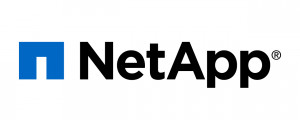This blog post is an excerpt from GovLoop’s recent guide, “Make DevOps a Reality at Your Agency.”
DevOps can help agencies achieve real results in terms of efficiency, speed and product quality. However, reaping those rewards isn’t always a clear or easy task for departments new to the agile workflow of DevOps. Many teams are unsure which technologies they require to implement iterative development processes. Others worry that the tools they need won’t integrate with the legacy systems that plague government organizations.
But in a recent interview with Rob Gordon, Federal CTO of NetApp, SolidFire, we learned that technology isn’t the true inhibitor to DevOps. NetApp provides data and cloud storage solutions for government innovators. Specifically, a scalable, integration-ready and automated solution like SolidFire can be a critical tool to overcome the more people- focused challenges of a new process.
“The challenge with DevOps is more often cultural than technical,” Gordon explained. “There are turf wars between IT and Dev teams. Much of the infrastructure is considered ‘sacred equipment’ and, as a result, departments are afraid of losing control over the infrastructure. There’s also the idea that knowledge is power, and if you share this knowledge, then your worth to the company lessens. Unfortunately, this mindset hinders any advancement towards DevOps.”
On top of territorial concerns, many new DevOps adoptees worry about the risk to budgets and workflows that a different process can bring. To confront those cultural aversions, Gordon suggested starting with a core group of champions who can help normalize and standardize the DevOps process within an agency. That approach is a stark contrast to many of the “edicts passed down from high-ups” that he said he often sees in government agencies.
“You have to start with a small project and a small team,” Gordon said. “You can’t boil the ocean at once. You need to identify next- generation leaders within your agency who are determined to make DevOps happen.”
That iterative approach to DevOps can mitigate many of the cultural concerns to adoption, but only if it is enabled with the right technologies that are scalable, integration-ready and automated.
For agencies to follow an incremental approach to DevOps, they’ll need technologies that can not only meet the needs of small teams, but also scale as new projects are added to the DevOps process. This scalability cuts costs and risk for agencies, because they don’t have to substantially invest in DevOps workflows up front. Instead, they can start small to learn what is and isn’t working. Once the process is fine-tuned and lessons are learned, agencies can quickly scale their technologies as user workloads, data storage and computing needs accrue.
When DevOps gets off the ground in one department, agencies may want to transfer that process – and the tools that support it – to new departments that operate in different IT systems. For that reason, agencies also want technologies that can easily integrate with other tools and systems – even the ones that are outdated.
“At the end of the day, whenever you look at any DevOps solution, you need to look at the entire suite of tools and the infrastructure it operates within,” Gordon said. Look for a solution that can easily overlay onto existing infrastructures – no matter what they look like – so that the DevOps tools don’t disrupt existing workflows unnecessarily. That way, new users are more likely to incorporate DevOps into their processes, rather than reject it as an incompatible tool.
To that same end, you’ll want to find solutions that automate as much of the scaling and integration as possible. Things like workload management, storage allocation and data reduction shouldn’t fall to IT administrators or other personnel as DevOps expands in your organization. “Those types of myopic details that we worry about with traditional architectures have to disappear or you won’t be successful in scaling DevOps,” Gordon said.
Without automation, developers and IT staff couldn’t focus on constant code deployment – the ultimate goal of DevOps. Instead, they’d be bogged down in manual, time-consuming administrative tasks. If the technology doesn’t foster a culture of productivity, it simply won’t be adopted, Gordon explained.
Ultimately, the barriers to DevOps adoption are cultural. However, many of the obstacles to new processes – things like risk aversion, legacy silos and workflow disruption – can be overcome with the right tools. That’s why many agencies are adopting solutions like NetApp’s SolidFire.
SolidFire provides scale-out infrastructures, self-healing high availability, guaranteed quality of service, and in-line data reduction architected for the Next Generation Data Center. Plus, the SolidFire deployment consists of a single system, contains no management silos, and is designed
to automate the most time-consuming administrative tasks. Those attributes – scalability, integration and automation – are exactly what agencies will need to overcome the barriers to DevOps and truly succeed.






Leave a Reply
You must be logged in to post a comment.